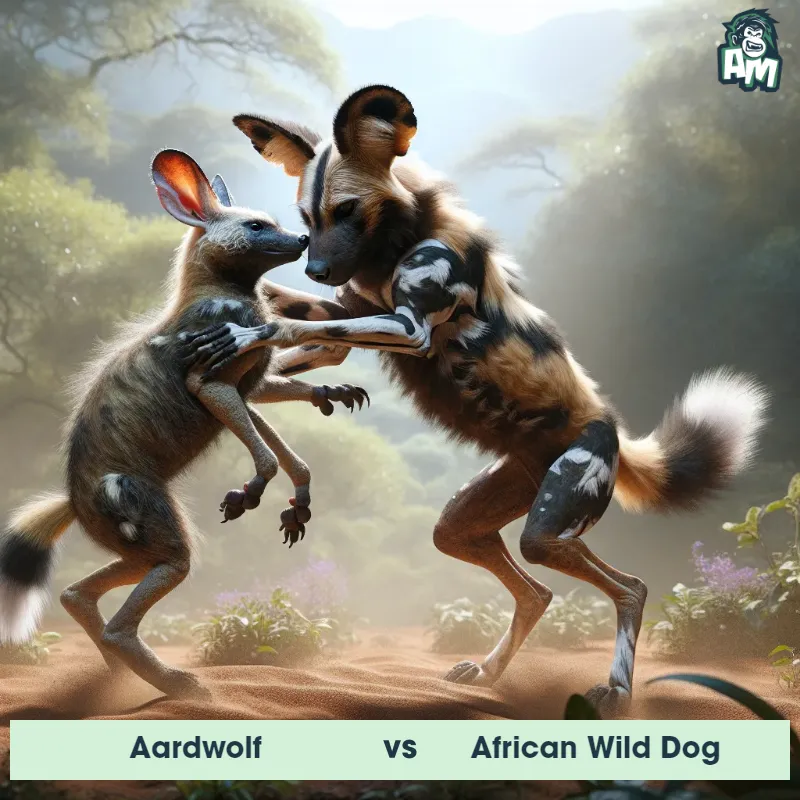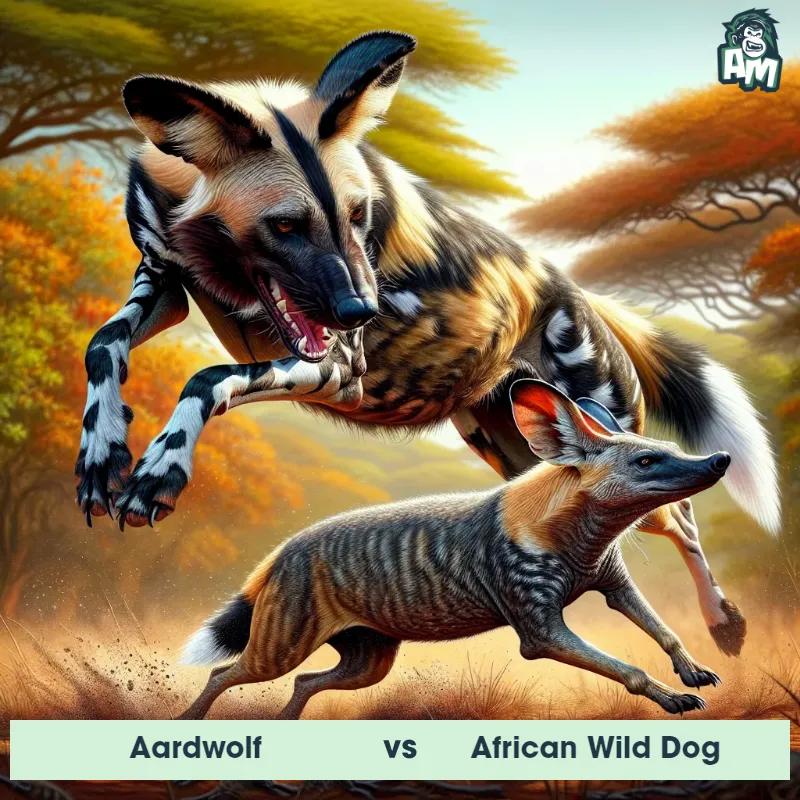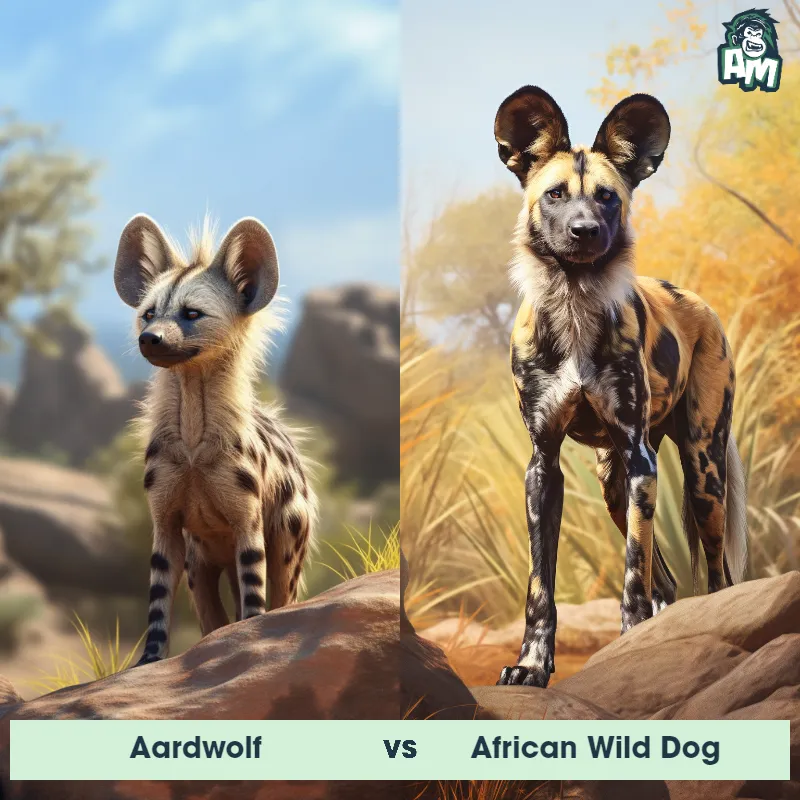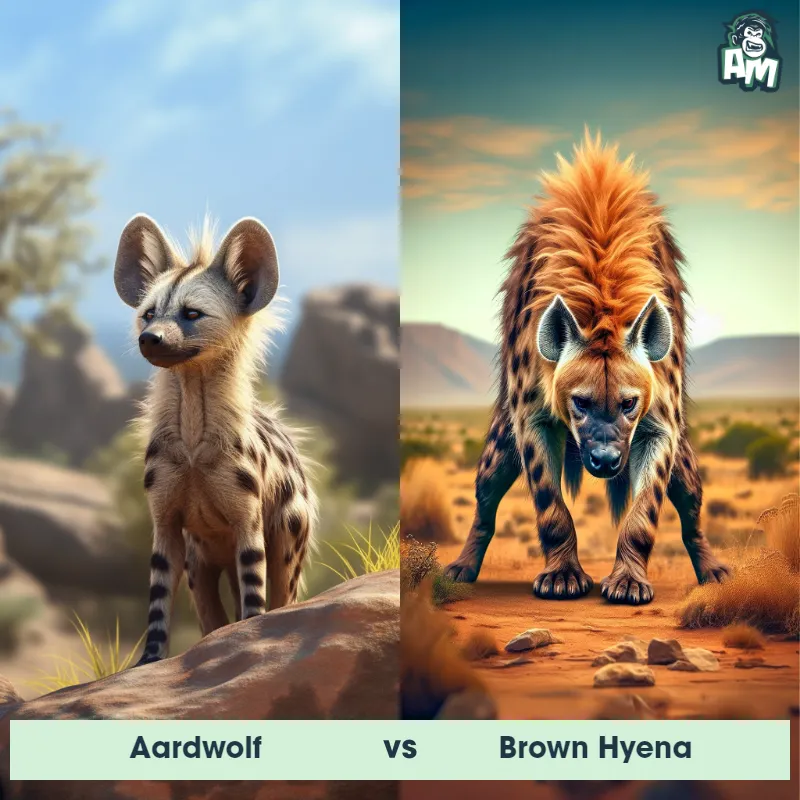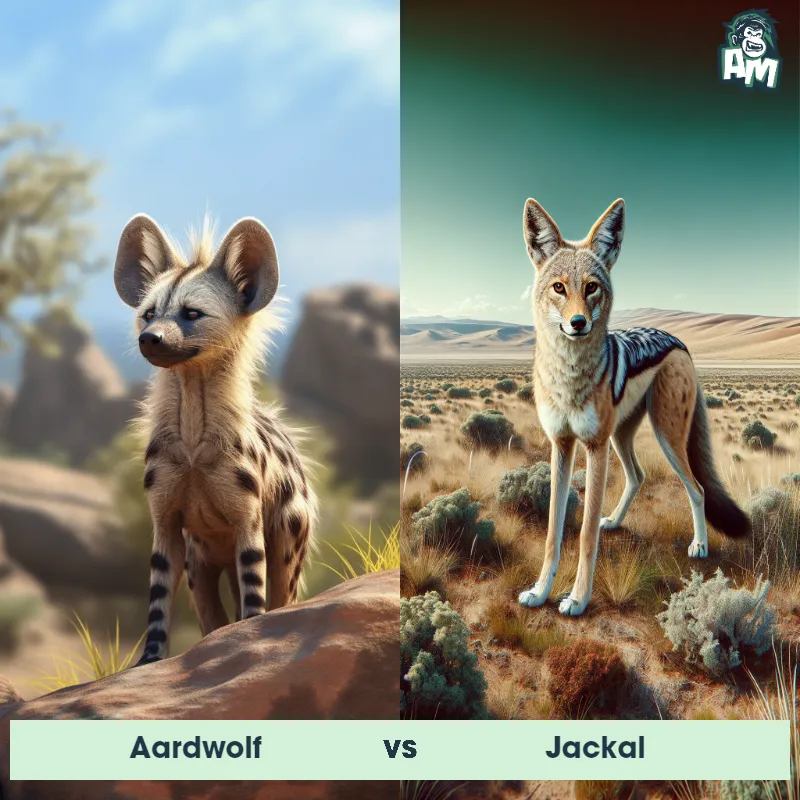The Aardwolf
The Aardwolf, also known as Proteles cristatus, is a small carnivorous mammal native to eastern and southern Africa. It is a member of the hyena family but is visually distinct with a smaller and more slender body, measuring around 55-80 cm long and weighing between 9-14 kg. The Aardwolf sports a sandy-colored coat with black vertical stripes, making it perfectly camouflaged in its natural environment. It has distinctively long, pointed ears and a bushy tail. Unlike other hyenas, it feeds primarily on termites, using its long tongue to capture them from their nests and consuming thousands in a single night.

| Aardwolf | |
|---|---|
| Size | 16-20 inches (40-50 cm) at the shoulder |
| Weight | 15-33 pounds (7-15 kg) |
| Speed | Speed: 25 mph (40 km/hr) |
| Key Strength | None |
| Biggest Weakness | Small size and lack of physical strength |
| Scientific Name | Proteles cristata |
| Family | Hyaenidae |
| Habitat | Underground burrows |
| Geography | Eastern and Southern Africa |
| Diet | Termites |
| Lifespan | 6 years - 10 years |

The Aardwolf
The Aardwolf, also known as Proteles cristatus, is a small carnivorous mammal native to eastern and southern Africa. It is a member of the hyena family but is visually distinct with a smaller and more slender body, measuring around 55-80 cm long and weighing between 9-14 kg. The Aardwolf sports a sandy-colored coat with black vertical stripes, making it perfectly camouflaged in its natural environment. It has distinctively long, pointed ears and a bushy tail. Unlike other hyenas, it feeds primarily on termites, using its long tongue to capture them from their nests and consuming thousands in a single night.
![[object Object] Gif](https://tenor.com/view/aardwolf-hyena-dog-mammal-cute-gif-16420564.gif)
Fun Fact: Aardwolves have a unique defense mechanism – instead of fighting or running away from danger, they have the ability to secrete a noxious-smelling liquid from their anal glands, which they can spray up to 10 feet away, deterring potential predators.
| Aardwolf | |
|---|---|
| Size | 16-20 inches (40-50 cm) at the shoulder |
| Weight | 15-33 pounds (7-15 kg) |
| Speed | Speed: 25 mph (40 km/hr) |
| Key Strength | None |
| Biggest Weakness | Small size and lack of physical strength |
| Scientific Name | Proteles cristata |
| Family | Hyaenidae |
| Habitat | Underground burrows |
| Geography | Eastern and Southern Africa |
| Diet | Termites |
| Lifespan | 6 years - 10 years |
Match Highlights
Aardwolf Matchups
We use AI to simulate matchups between the Aardwolf and other animals. Our simulation considers size, strength, and natural predatory behaviors to determine the most likely outcome.

Can't find the Matchup you want?
Create Your Own MatchupAardwolf: Diet, Predators, Aggression, and Defensive Behaviors
What do Aardwolves eat?
Aardwolves primarily feed on termites, particularly the harvester termite species. Aardwolf have specialized teeth and long, sticky tongues to extract termites from mounds. Occasionally, Aardwolf also consume other insects and larvae.
Do Aardwolves have any predators?
Aardwolves are vulnerable to predation by larger carnivores such as lions, leopards, hyenas, and birds of prey. Aardwolf rely on their nocturnal habits, cryptic coloration, and burrowing behavior to avoid predators.
Are Aardwolves aggressive?
Aardwolves are generally shy and non-aggressive animals. Aardwolf are solitary by nature and avoid confrontations with other animals, preferring to retreat or hide when faced with a threat.
Do Aardwolves fight?
Aardwolves rarely engage in physical fights, as Aardwolf are not territorial and prefer to avoid conflicts. However, Aardwolf may display defensive behaviors if threatened, such as growling, hissing, or baring their teeth.
How do Aardwolves defend themselves?
When threatened, Aardwolves rely on their primary defense mechanisms, which include emitting a foul-smelling secretion from their anal glands and vocalizing to deter predators. Aardwolf may also flee into burrows or dense vegetation to escape danger.
What is the Aardwolf's biggest weakness in a fight?
The Aardwolf's main weakness in a fight is its relatively small size and lack of physical strength compared to larger predators. While Aardwolf have defensive strategies like secreting a foul-smelling odor, Aardwolf are not well-equipped for physical combat and rely on agility and evasion to survive encounters with more powerful animals.
Fun Fact: The Aardwolf's diet mainly consists of termites, but interestingly, it avoids eating the soldiers termites with larger mandibles and instead chooses to feed on the worker termites that are smaller and easier to consume, ensuring its survival without encountering aggressive individuals.
Fun Fact: Aardwolves are highly vocal creatures, employing various sounds to communicate with each other. They use a range of calls, including chattering, grunts, hisses, and growls, which play important roles in territorial marking, mating rituals, and maintaining social cohesion within their small family groups.



